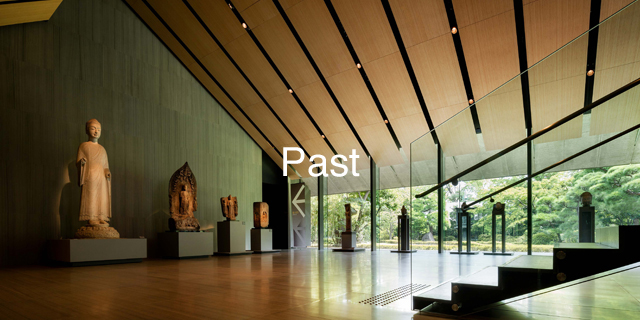
-
Special Exhibition
Kōrin and Kenzan: Brother Artists, Resonating Aesthetics - Saturday, April 14 - Sunday, May 13, 2018
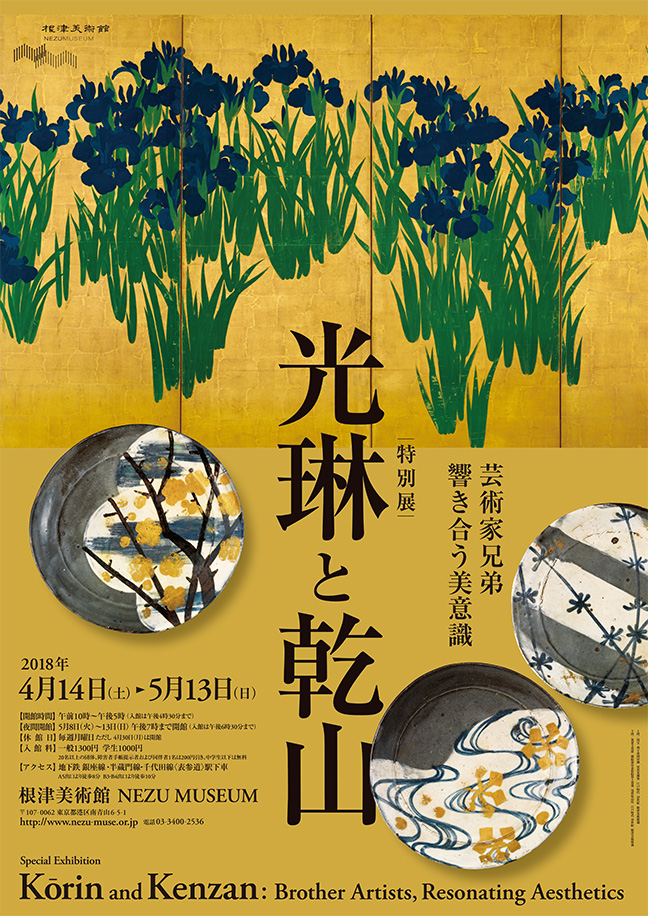

| Closed | Mondays, except April 30 |
|---|---|
| Hours | 10 am to 5 pm(Open till 7 pm from May 8 to 13. Entrance closes 30 min. before closing) |
| General admission | Adult 1300 yen, Student 1000 yen |
| Gallery | 1/2/5 |
The mid Edo period painter and designer Ogata Kōrin (1658-1716) elevated the decorative tradition in Japanese art to the level of contemporary design. His Irises, in which he applied designs for use on kosode kimono to the large picture plane of a pair of folding screens, is a work that presents Kōrin’s true genius.
Kōrin’s younger brother Kenzan (1663-1743) was a ceramic artist who launched new trends in the world of ceramics. Studying ceramics from Japan, China, and Europe, he left us a diverse body of work that reflects his broad-ranging tastes. It was Kenzan who turned potters into artists.
This exhibition presents the richly varied ouerves of these two artists who are also brothers, a pairing rare in art history. The art worlds they created were sometimes contradictory and sometimes resonated harmoniously. As we study their work, we search for aesthetic exchanges between them and re-examine what makes each of the brothers, Kōrin and Kenzan, so fascinating.
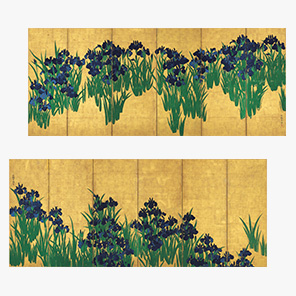


- Irises
By Ogata Kōrin
Ink and color on gold-foiled paper - Japan Edo period, 18th century
Nezu Museum - Kōrin, who had made a late start in his career as an artist, achieved his first artistic peak in his forties. The azurite blue that he used lavishly in painting the flowers and the malachite green with which he rendered the leaves in sharp brushwork give these screen paintings, which have strongly a planar design, their depth and dynamism.
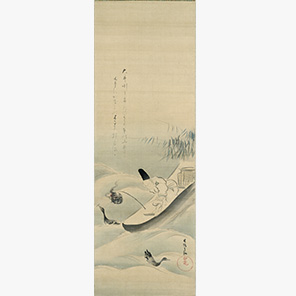


- Cormorant Fishing
By Ogata Kōrin
Ink and slight color on silk - Japan Edo period, 18th century
Seikado Bunko Art Museum - This painting is from the same period as Irises. In it Kōrin combines the precise elegance of Kanō-school style painting in ink and light colors with gentle Sōtatsu-style depiction. Kōrin is thought to have taken the subject for this painting from the Noh play Ukai (The Cormorant Fisher).
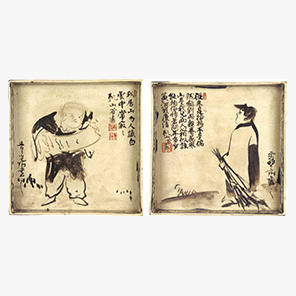


- Square Dishes with Hanshan and Shide Design
By Ogata Kenzan, with painting by Ogata Kōrin
Stoneware with underglaze iron - Japan Edo period, 18th century
Kyoto National Museum - Hanshan unrolling a picture scroll, Shide holding a broom: The use of rather careless, informal brushwork aims at a naïve effect. It is because these were collaborative works by Kōrin and Kenzan, who was also a literary man, that these paintings on dishes could achieve this atmosphere.
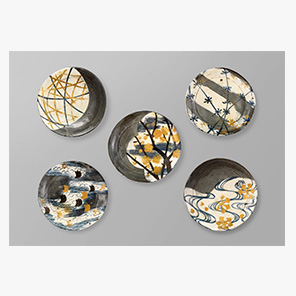


- Dishes with Various Designs
By Ogata Kenzan
Stoneware with underglaze polychrome enamel and overglaze gold - Japan Edo period, 18th century
Nezu Museum - Repeated plum trees in a plum blossom motif, sail boats on the sea with its surface glittering in the sunshine, catchweeds with flowing clouds in the background, silver grass lit by the full moon, water caltrops floating in flowing water: Kenzan’s designs created with his exquisite technique and superb motifs to these hand-formed, simple dishes.


- Birds and Flowers Based on Fujiwara Teika's Poems of the Twelve Months (The Ninth Month)
By Ogata Kenazan
Ink and color on paper - Japan Edo period, dated 1743
Nezu Museum - This painting is based on Fujiwara no Teika’s waka poems on the birds and flowers of the twelve months of the year. Kenzan's paintings are fascinating for a style rooted in amateurism, a literary man’s anti professionalism, a world in which painting and calligraphy create an aesthetic whole.
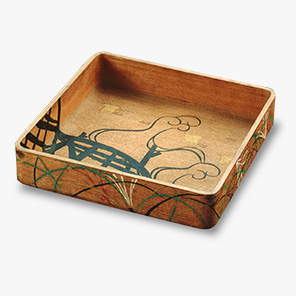


- Tray with Musashino and Sumida River Design
By Ogata Kenzan
Ink and color on wood - Japan Edo period, dated 1743
The Museum Yamato Bunkakan - A gabion, a large wave, and a plover have been painted on the interior of this shallow wooden box. Silver grass in multiple colors decorate the exterior and bottom. Here the Kōrin-style design and Kenzan’s characteristic simple brushwork combine in a work Kenzan created at the age of 81, the year of his death.
